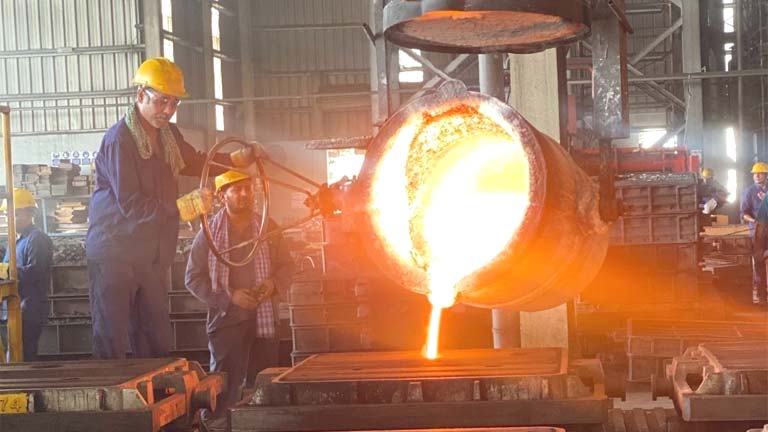
Carbon Steel is one of the strongest and most affordable metals in the world. Apart from these properties, which make carbon steel easily available to most manufacturers, carbon steel can be identified as any steel alloy containing carbon in the range between 0.12% to 2% and copper at a rate of less than 0.4%.
If you’re new in the welding, construction, or manufacturing industry and want to become more accustomed with the most widely used metals or if you’re just looking to broaden your knowledge, read on for more interesting facts about carbon steel.
Did you know that the term carbon steel can be used to describe any steel that is simply not stainless steel? Also, did you know that carbon steel can be classified as low carbon steel, medium carbon steel, and high carbon steel? In this article, we will explain the properties of each carbon steel bracket and then talk about some of the most common applications of this ubiquitous metal in daily life and more intricate settings.
1. Low carbon steel
Low carbon steel typically contains 0.3% carbon or less. This type of carbon steel is robust but does not temper as easily. However, it costs much less to produce than medium and high carbon steel, making it more flexible to use in certain applications. While malleable enough, its external surface can be further improved and strengthened with heat treatment, a great flexibility that high carbon steel often lacks. Its versatility allows it to come in different shapes and sizes, including sheets, beams, plates, and bars.
This type of carbon steel can be used in marine structures, such as shipbuilding, vehicle body manufacturing, and other consumer appliances. It’s widely used due to its ability to benefit the fabrication process by withstanding extremely high temperatures. Carbon steel consisting of the lowest amount of carbon can be used for manufacturing fences and gates.
2. Medium carbon steel
With a relatively low tensile strength, medium carbon steel can be easy to purchase due to low rates and even easier to form and fabricate. Compared to low carbon steel, it does have a slightly higher ratio of carbon to iron. Typically it consists of less than 0.60% carbon, being stronger than low carbon steel, but sometimes presents issues in the fabrication or welding process. To improve the quality of medium carbon steel and make it easier to machine, many add silicon and manganese.
This type of carbon steel is most commonly used in buildings, bridge fabrication, pipelines, and automotive parts because it’s stronger than low carbon steel and offers at least some ductility. It can also be used to manufacture boilers and other pressurized tank systems, fridges, and washing machines, due to its ability to prevent cold cracking.
3. High carbon steel
With the highest ratio of iron (more than 0.60%), high carbon steel is the sturdiest metal of all three categories but is more difficult to weld and more brittle when heat treated. Despite often challenging the welding process, high carbon steel is the most predominant and indispensable carbon steel category in human and industrial life.
High carbon steel’s increased strength, resistance to friction and wear, and moderate ductility make it ideal for cutting tools, like blades, springs, or masonry nails, which can be inserted into rocks. Apart from sharp objects, high carbon steel can be used for large machine parts, metal lamp posts, industrial castings, and hot water radiators.
Choosing the Best Carbon Steel Category
Carbon steel, in any shape, form, or capacity, plays a vital role in many construction projects. As a welder, fabricator, or manufacturer, you should acknowledge which category of carbon will benefit your application and project.
Carbon steel can be both a blessing and a curse due to its strong but often brittle nature. Differentiating between the three main categories of carbon steel save you time, money, benefit your projects in the long run and result in a better return on investment.




